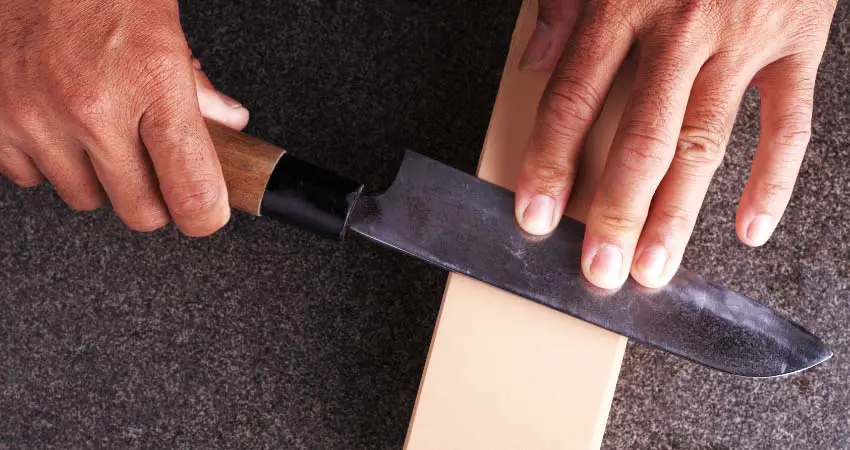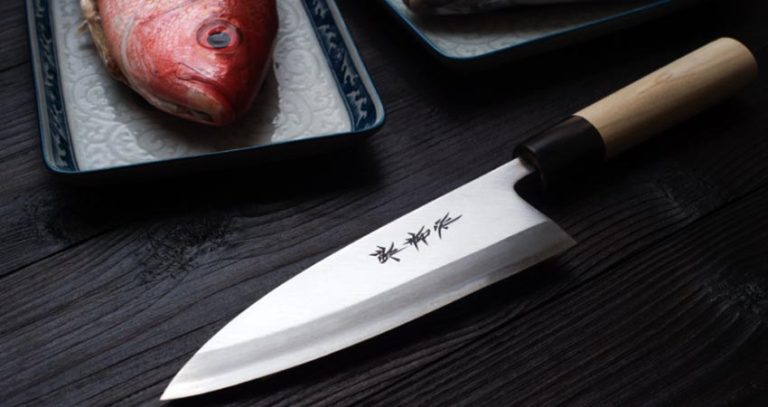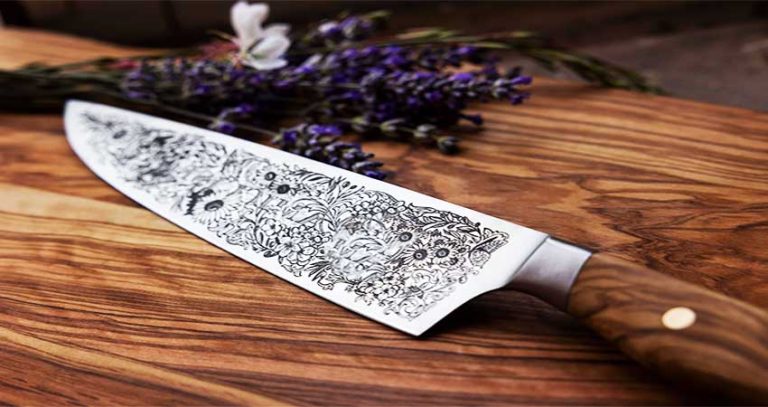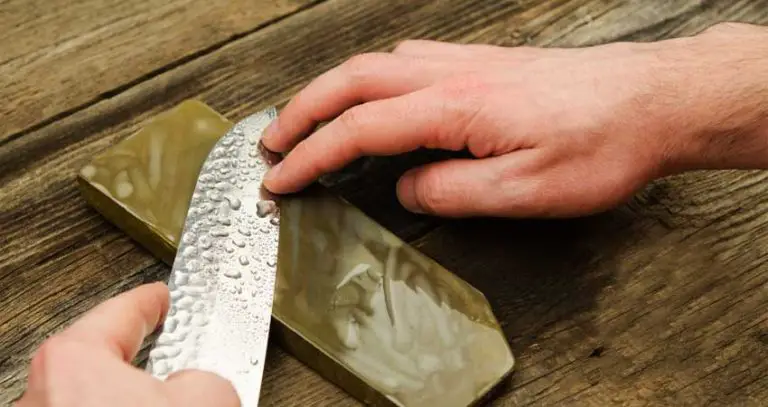How To Sharpen A Single Bevel Deba?
Sharpening kitchen knives is a pleasant activity that improves your blade awareness and teaches you a valuable skill.
If the blade’s edge becomes blunt, it is not cut anymore. The Deba blade is sharpened at a 45-degree angle with a moderate abrasion stone until the knife’s surface is polished to remedy this.
However, sharpening single bevel blades is a more difficult task requiring caution. This article will go through the fundamental techniques and suggestions you’ll need to get started sharpening your personal single bevel knives.
Steps For Sharpening Singel Bevel Deba
It’s perilous to cut with a dull blade. You’re more prone to hurt yourself if you have to put more effort to cut through anything you’re slicing. Luckily, a whetstone, and some water can be used to hone a singel bevel deba knife. Below are the steps to shapren your deba knife.
Step 1: Gather The Sharpening Gear

The first step is to gather all the necessary tools for sharpening the knife. You will need
- A synthetic sharpening stone with two sides (coarse and fine grit)
- A honing steel rod, which is a lightly grooved, magnetic iron rod
Sharpening stones are divided into two sides, each with a different grit. The grit of the stone determines how coarse it is and how fine it sharpens. The high number represents the finer grits, higher numbers, and vice versa.
Step 2: Soak The Whetstone
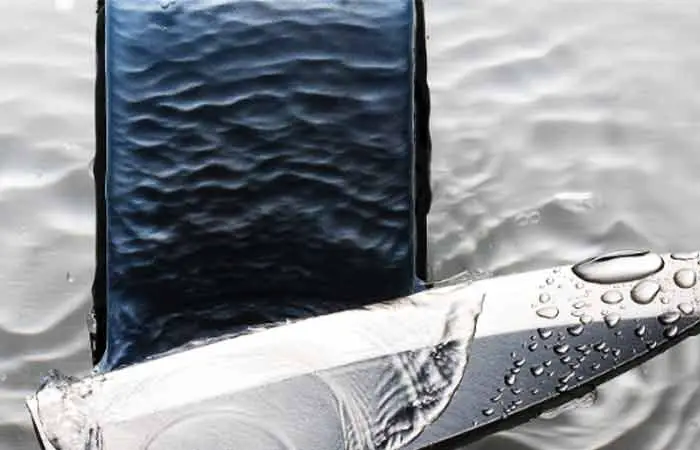
- Since the whetstone is porous, it is a must to soak it in water so that no air pockets are left when you start sharpening the Deba knife.
- This reduces abrasion and protects against scratches and chipping. Moreover, you will also need the water to wet the stone from time to time during the sharpening.
Step 3: Place The Whetstone Properly
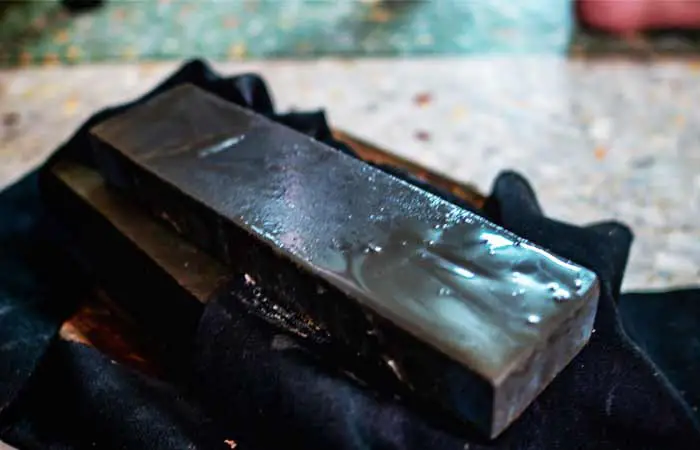
- To avoid any potential hazards, put the whetstone on a non-slip surface.
- A moistened cloth, a silicon baking surface, or a heated pad can work well.
- You don’t want the stone to slip while you sharpen because this is the most common reason to take yourself to the Hospital.
- Moreover, when you start sharpening, place the whetstone’s coarse grit surface, which has the lowest value.
- Before you begin, spray some water on the surface.
- Preferably begin with the stone’s coarser side, which has a lower grit grade. Many stones begin at F 400 or J 1000.
- Professional cooks may use many whetstones with various grits to get a perfect blade.
- You can gain an advantage with more diversity by gradually raising the friction.
Step 4: Choose The Correct Angle For Sharpening
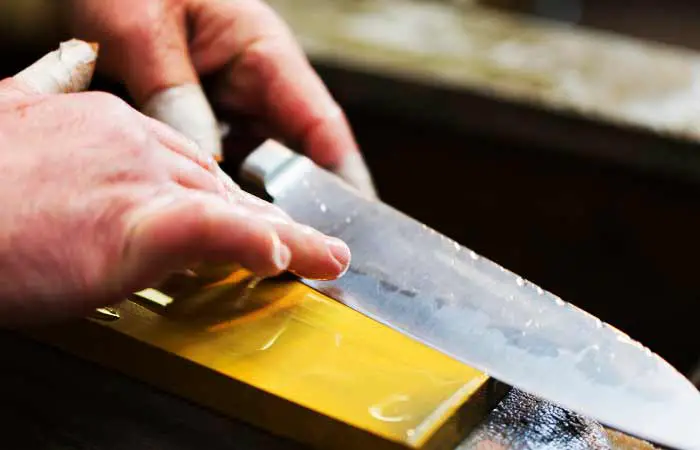
- Deba single bevel knives are made of a blend of steel and soft iron.
- There is a shining line between the soft and hard iron.
- Two-thirds of the cutting blade is soft iron.
- The softer iron portion will be honed if you attempt to hone it with a consistent force, and the shining zone will be destroyed.
- Moreover, when you hon the blade on the coarser side of the whetstone only, it will form deep scratches on the blade.
- So for that, you need to flip the less coarse side of the whetstone afterward.
- Now make a 45-degree angle of the knife and sharp from tip to end.
- With your left hand’s fingers, push the blade on the whetstone, and with your right hand, press down to the cutting edge, opposing each other to hone the entire cutting side.
Step 5: Make Proper Hand Movements For Sharpening

- Slide the blade uniformly across the whetstone while maintaining a steady knife angle.
- This movement should be precise and smooth, as if you were cutting off an unbelievably tiny slice of stone.
- To keep the whetstone wet, pour it with water frequently.
- Remember that Friction is not your good buddy if it is not managed.
- To avoid accidental damage, keep the stone damp.
- When you wet the stone repeatedly, it’s a good decision to clean any dirt off the edge.
Step 6: Repeat The Process
- Repeat as needed, sliding your fingertips over the edge to sharpen it ultimately.
- For each part, try to employ the same sequence of moves.
- Do not attempt to force the blade into the whetstone.
- You want it to keep flat with the surface with each stroke, yet you should not drill it in.
- Continue with the other side of the knife, doing all the same amount of runs.
- Both sides of the knife should be honed equally, or the blade will be uneven.
- As with the first side, an identical method should be employed.
- Touch the knife on the other side of the previously honed one.
- Switching sides is essential if you feel a slight roughness or snag on the unsharpened edge.
Step 7: Hon On The Finer Grit Stone
- Rotate, sharpening each edge with the more delicate gritstone.
- Take a right cross, flip the blade and make a left-side run.
- The necessity to maintain the stone moistly is still present, as is the tilt and movement.
- Because the finer grit makes tiny, finer adjustments, you’ll want to ensure they’re appropriately balanced by switching sides.
- Using the fine grit stone, you only have to apply light pressure to the blade.
- Keep the stone exceptionally moist, and continuously clean the knife’s dirt using a damp cloth.
How To Fix The Broken Tip Of The Singel Bevel Deba?
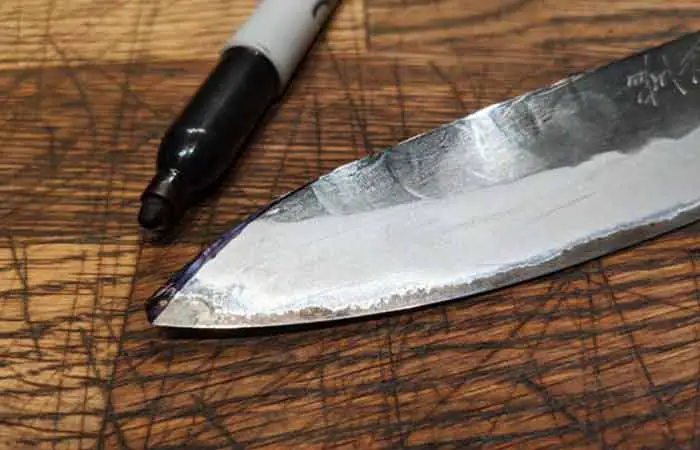
As mentioned earlier, keep your whetstone soaked in water. In addition, note that this approach is only applicable to a broken knife tip; it does not apply to cracks or other troubles lower down the blade.
First, Sideways flip your coarse sandstone. Place a moist cloth on the table to keep it from moving. You’ll probably have your other hand to keep the stone firm as you work.
To bring the knife back to a position, rub it horizontally on the edge of your rough whetstone. Sharpen the flat, fractured tip into a diagonal edge while holding the blade close to the point.
Keep the whetstone moist and move back and forward between the knicks and breaks to get clear off the knicks and breaks.
Stone as if cutting. Then, like you’re cutting something, move the knife backward and forward vertically. Move the knife till the tip has a nice and sharp curvature.
After repairing the tip, hone the whole knife. You don’t need to do this backward; you want to sharpen the knife first, then repair the tip. This will re-align and sharpen everything.
Conclusion
You might find sharpening the single bevel Deba knife difficult at first. But once you get the hang of it, it will be a no labor for you.
Moreover, it is also important to note that the beveled knife is different from ordinary kitchen knives since it comprises two different iron types.
So keep an eye out for the edge when you sharpen the knife. We hope you find this guide helpful. Let us know in the comments if you find it helpful.

